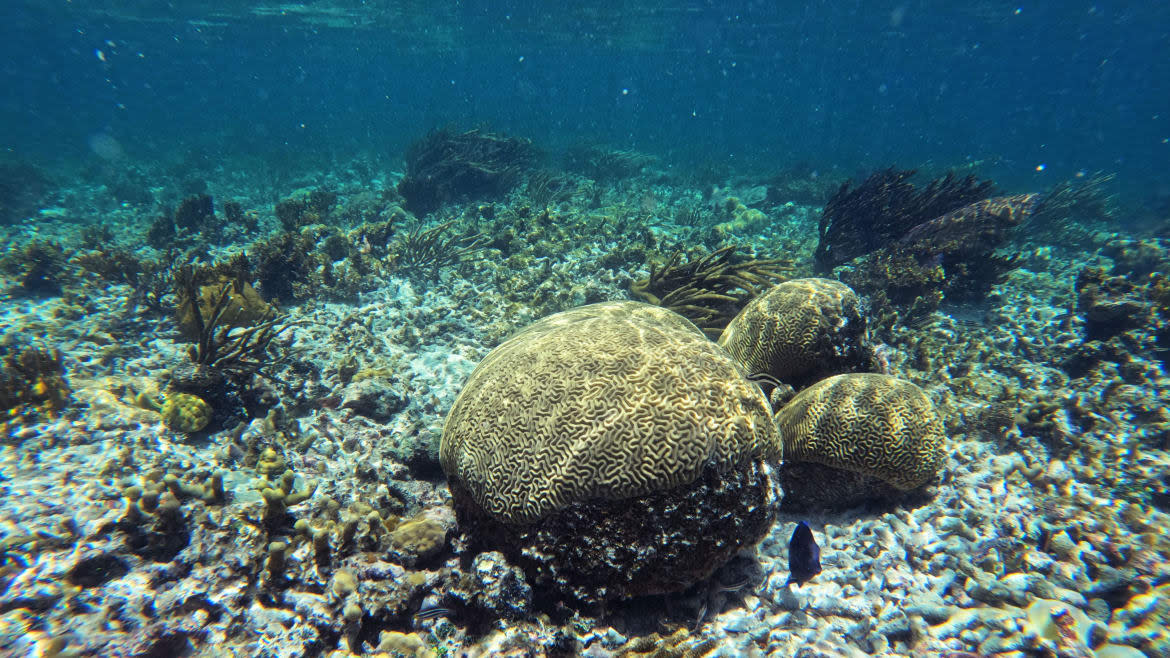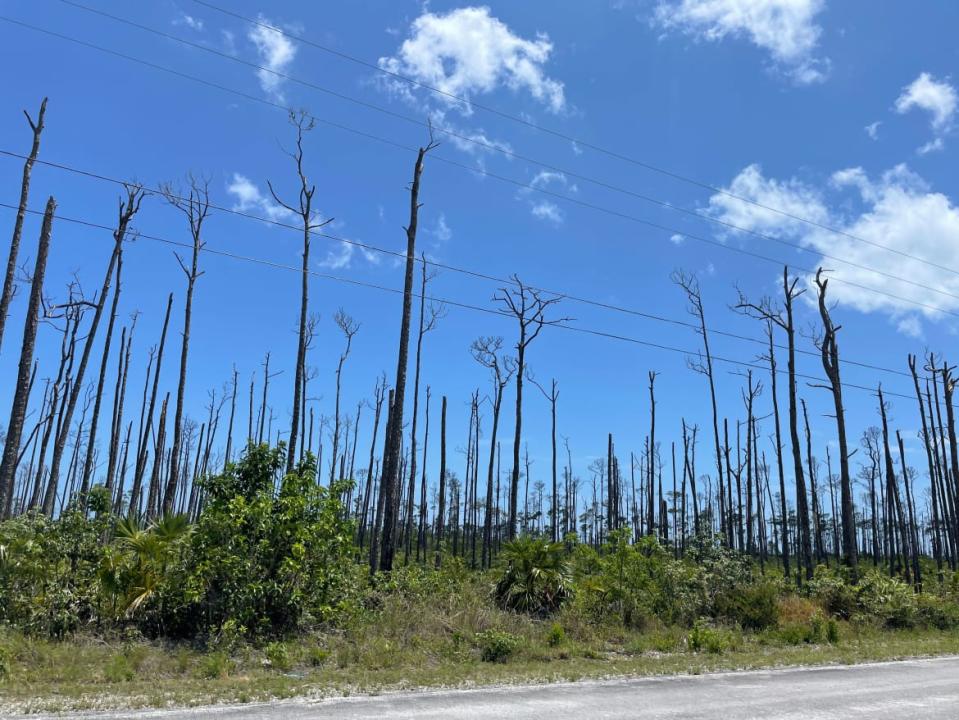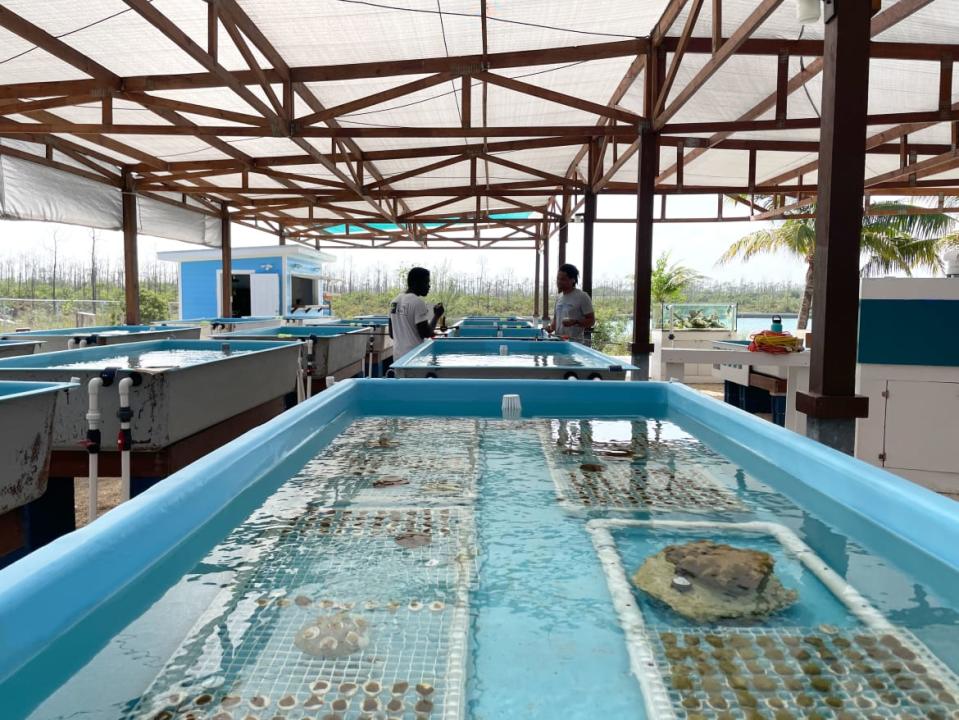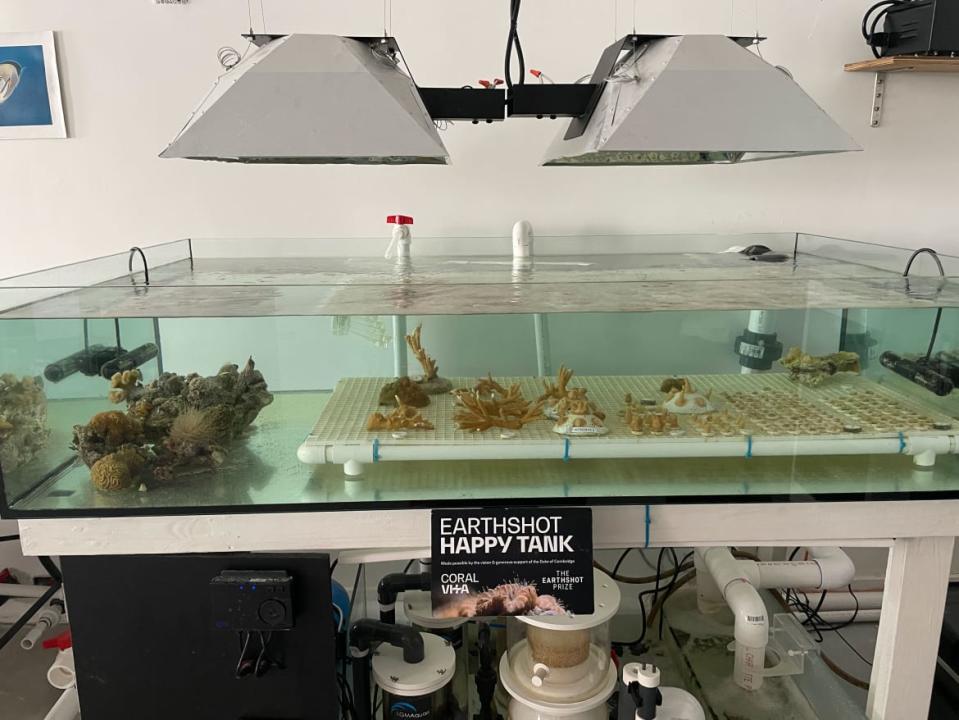This New Caribbean Experience Is a Guilt-Free Pleasure

The party may never stop in Nassau, the most famous of Bahamas locales, but just north on Grand Bahama Island most tourists come to luxuriate in the glittering crystal clear waves and sprawling white sand coastlines. It is world renowned as a diver’s paradise, boasting the one of the planet’s largest underwater cave systems as well as shark and dolphin sighting tours. Snorkelers and free divers come to explore shallow shipwrecks and witness exquisite biodiversity like plump sea cucumbers and brilliant orange starfish. Conch is ever present both as empty shells for souvenirs and as a delicious food staple: sold as fritters or fried as conch “crack,” in hearty soups, chargrilled, or marinated in “conch salad.” The island is also well known by movie trivia buffs as one of the primary locations for the Pirates of the Caribbean films.
However, amidst the serenity, sunshine, and seafood, the aftermath of Hurricane Dorian is ever present. In September 2019, the category five hurricane parked over the Bahamas for days, flooding Grand Bahama Island and neighboring Abaco with storm surges over 20 feet high. Tens of thousands of acres of once vibrant thriving pine trees are now eerie barren stalks that line the roads. Locals speak of life on the island with a very distinct “before and after.” Many people who grew up on Grand Bahama left because their homes were destroyed beyond repair or their line of work disappeared.

Scientists have been warning for years that climate change would increase the strength of hurricanes. It’s also contributed to the deterioration of natural protectors like coral reefs and mangrove forests that buffer islands and coastlines from these super storms.
On average, 80 percent of Caribbean coral reefs are dead, and at current pace 90-99 percent of the world’s reefs could be dead by 2050. It’s a stark statistic. But a new social impact organization is dedicated to preserving and protecting corals as a way to combat climate change. Coral Vita created the world’s first commercial land-based coral farm for reef restoration. Their grand vision is to regenerate and protect corals in the Bahamas and around the world while bringing tourists and locals together to learn about these incredible creatures and what we can do to ensure their survival.
What’s so special about coral? “We saw coral reefs and mangrove forests literally save people's lives during Hurricane Dorian. A quarter of all marine life depends on them,” co-founder Sam Teichner asserted. “There are cultures that are completely rooted in coral reefs. The Hawaiian people's origin story, all life comes from the coral polyp. Globally, coral reefs sustain a billion people’s livelihoods, but also their stories are tied to it.”
Coral Vita’s farm is located in Freeport, Grand Bahama, about 20 minutes from the airport and 10 minutes from where the cruises dock. It sits off of a main road somewhat hidden in a natural alcove surrounded by cacti and plants that reminded me more of Southern California than a tropical island. But once you enter the open-air education center and laboratory you’re treated to views of the Grand Lucayan Waterway, where their divers and scientists have easy access to the field.
Co-Founders Teicher and Gator Halpern were two friends finishing up graduate degrees at Yale with a shared love for diving and social impact. Though it officially opened in Freeport in 2019, they started the company in 2015 taking time to fundraise and research locations. They considered the British Virgin Islands and the Dominican Republic but found the best environmental conditions and government support to open their flagship on Grand Bahama Island. Then they assembled a powerhouse team of Bahamian and international marine biologists, tech experts, government allies, and enthusiastic students to bring the vision to life.

“A big part of our model is through workforce development, through workshops, capacity building, for students, for fishermen, for government officials,” Teicher explained. “We’re very much part of the communities, these are the reefs people grew up alongside, or depend on. Because it’s the right thing to do, but also for the project to be more successful by empowering and integrating local communities, it’s something that really matters to us.”
Three months after they opened, Hurricane Dorian hit, spreading their tanks across the island. They spent the next six months helping community members rebuild, and re-opened the farm in March 2020. Just in time for a global pandemic.
The work continued despite the uncertainty of the past two and a half years because climate change didn’t stop even if borders closed and humans had to shelter in place. But Coral Vita’s working farm is now open to the public with plentiful tanks of coral fragments, a touch-tank, and a mangrove garden run by local Bahamian students.
“The idea is as we grow corals to restore the reefs, we welcome tourists. Be it off of planes, cruise ships, private boats. If you are part of a tour group, if you want to arrange something individually, if you’re the future King of England, you’re welcome here,” said Teicher with a proud grin referencing a recent visit from Prince William. In 2021, Coral Vita received the inaugural “Revive Our Oceans Earthshot Prize,” from the Duke and Duchess of Cambridge’s Royal Foundation, bringing greater global attention to the role of coral preservation in combating climate change.
Upon entering the farm, visitors are introduced to basic coral biology, why coral matter for our society and how we can protect them. It grounds visitors in their restoration methods; and gives context about the impact of Hurricane Dorian and its connection to coral health. You learn about their coral farming process: fragments of corals are collected from local reefs, raised in farms until mature, and then installed at the restoration sites. The knowledgeable technicians guide visitors through a maze of tanks highlighting different types of coral like “lettuce” coral, brain coral and even “booger” coral appropriately named by their looks. Peering into the tanks, you’ll see these animals at different stages—from microfragments placed near cuttings from their original parent colony that speeds up growth, to coral ‘cookies,’ round underwater concrete structures where numerous pieces of coral are nurtured before they are planted back onto the reef. (They do resemble chocolate chip cookies hence the name!) The microfragmenting method accelerates coral growth rates by up to 50 times, growing mature species in months rather than decades while vastly expanding the diversity of species for restoration. By adjusting growing conditions in the tanks, Coral Vita trains the corals to be more resilient and survive in the oceans that are becoming warmer and more acidic.

Because it’s a working farm, visitors will see the scientists in action carefully fragmenting corals, testing water quality, or plating corals on said cookies. If you visit during planting season which is roughly November through June, you’ll see the diving team collecting cookies to take out to the field to replant for growth in their natural habitat. The passion and camaraderie amongst the staff is palpable. Their enthusiasm shines making it a welcoming pit stop for families, groups and curious solo travelers.
There’s the “educational zone” with tanks showing the stark difference between a healthy coral reef ecosystem teeming with coral and fish, and a barren sea floor without coral. If you didn’t understand the critical role coral plays in the ocean then these two tanks make it plain. Additionally there are working replicas of Coral Vita’s ocean-based nurseries, and a wave tank that shows how coral reefs and mangrove forests protect shores and islands from storms and erosion. One of the highlights is (carefully) touching or holding Bahamian ocean residents such as sea stars, conch and urchins in the touch tank. Lastly at the small gift shop, you can even adopt a coral of your own or pick up an SPF 50 sun shirt which is a necessity in the relentless Caribbean sun.
After visiting the farm, I gained a different respect and appreciation for coral. I watched coral breathe, witnessed their resilience, and learned about their integral role as protectors of our planet. Inspired by their commitment, I asked Coral Vita’s Coral Restoration Specialist, and “born, bred, Bahamian” mermaid, Alannah Vellacott, what tourists like me can do to preserve coral. In short, her answer: “Try to ditch your addiction to single use plastics.”
She continued, “And disposable plastics. And it’s really easy. You just go into your kitchen or you go into your bedroom or maybe even your bathroom and you assess, how many bits of plastic am I throwing away daily, weekly, monthly? We’re not looking for perfection. We’re not asking you to dump your Honda Accord somewhere and go pick up an electric vehicle. It’s all about what you can do, what you have access to and what’s available to you.”
Vellacott also emphasized voting. “It’s free. You vote for politicians and for government officials who prioritize solving climate change, who prioritize the ocean, the environment.”
After my visit to Coral Vita I no longer see white coral on the shore as cute beach keepsakes. Instead I understand it means that the nearby water ecosystem might be struggling; I wonder what’s happening underneath the surface. I stopped myself from buying salad in a bag when I can grab a head of lettuce and carry it in my reusable shopping bag. I hear Vellacott’s reminder that all of these little efforts are going to make a big difference.
How to Visit Coral Vita:
Tours are available on select days and times and reservations can be made in advance on coralvita.co/tours. Tour pricing starts at $15, with children under 12 at $10 and free for those under 5.
Where to Stay:
Pelican Bay Hotel in Freeport is centrally located in the heart of the tourist zone near plentiful restaurants, bars, souvenir shops, conch stands and tour operators. It’s only a ten minute drive from Coral Vita and other ecotourism destinations like Garden of the Groves. It also has two swimming pools and an on-site restaurant making it convenient for families, groups, couples and solo travelers.
How to Get There:
Both American Airlines and BahamasAir operate flights in and out of Freeport. American Airlines operates flight to/from Miami, while BahamasAir operates to/from Fort Lauderdale. Flight time is approximately 45 minutes with gorgeous window views!
Get the Daily Beast's biggest scoops and scandals delivered right to your inbox. Sign up now.
Stay informed and gain unlimited access to the Daily Beast's unmatched reporting. Subscribe now.

